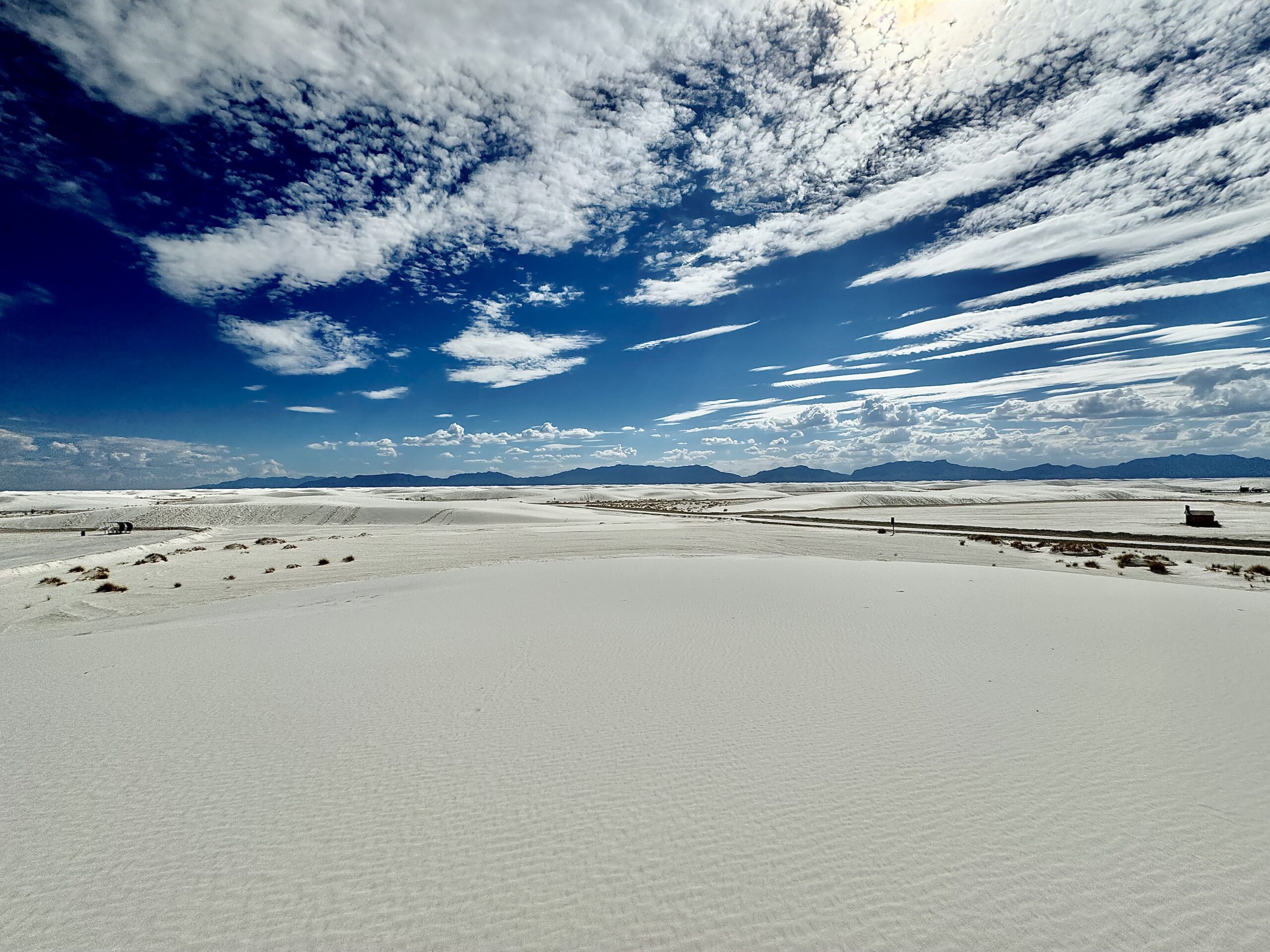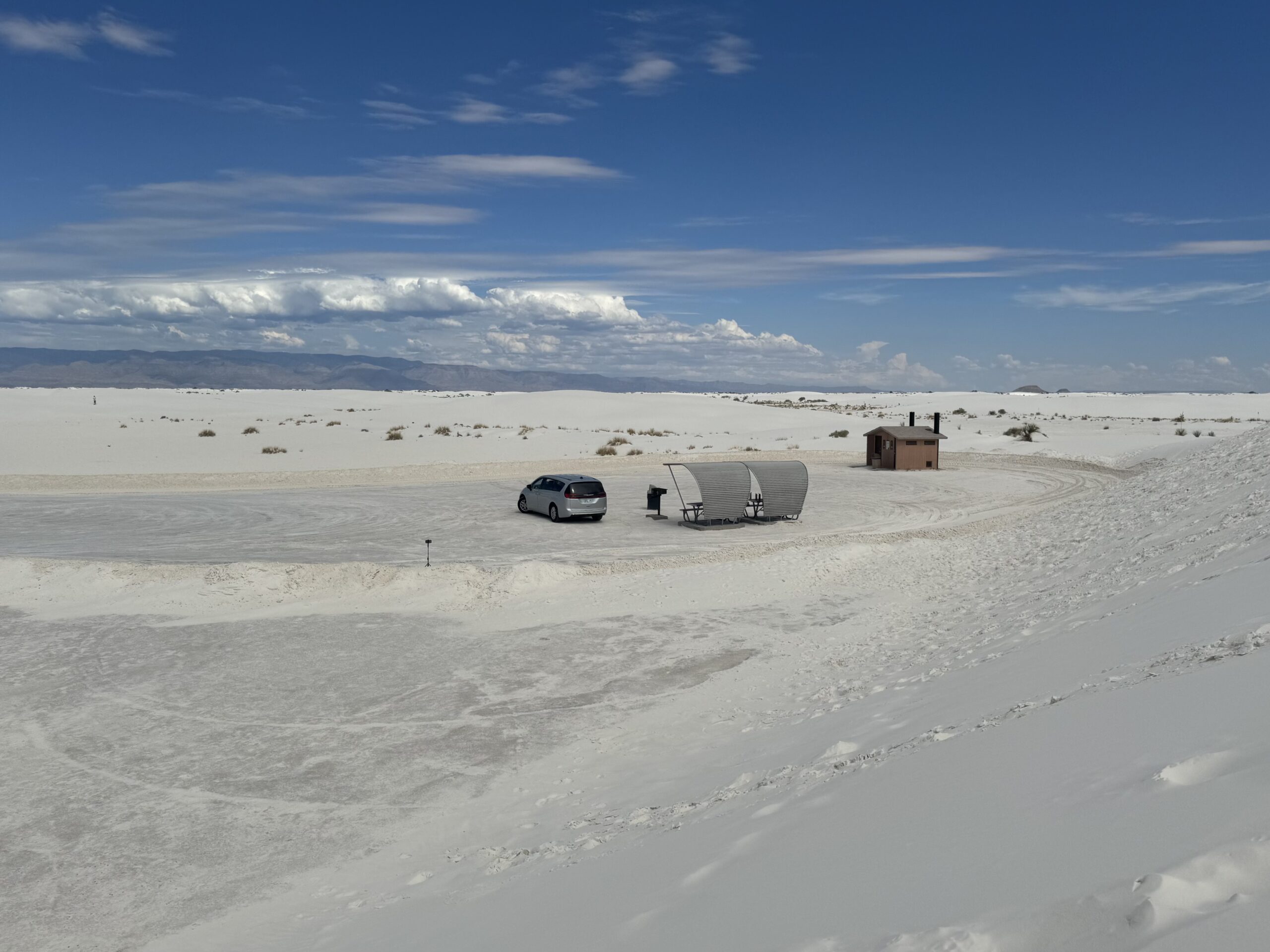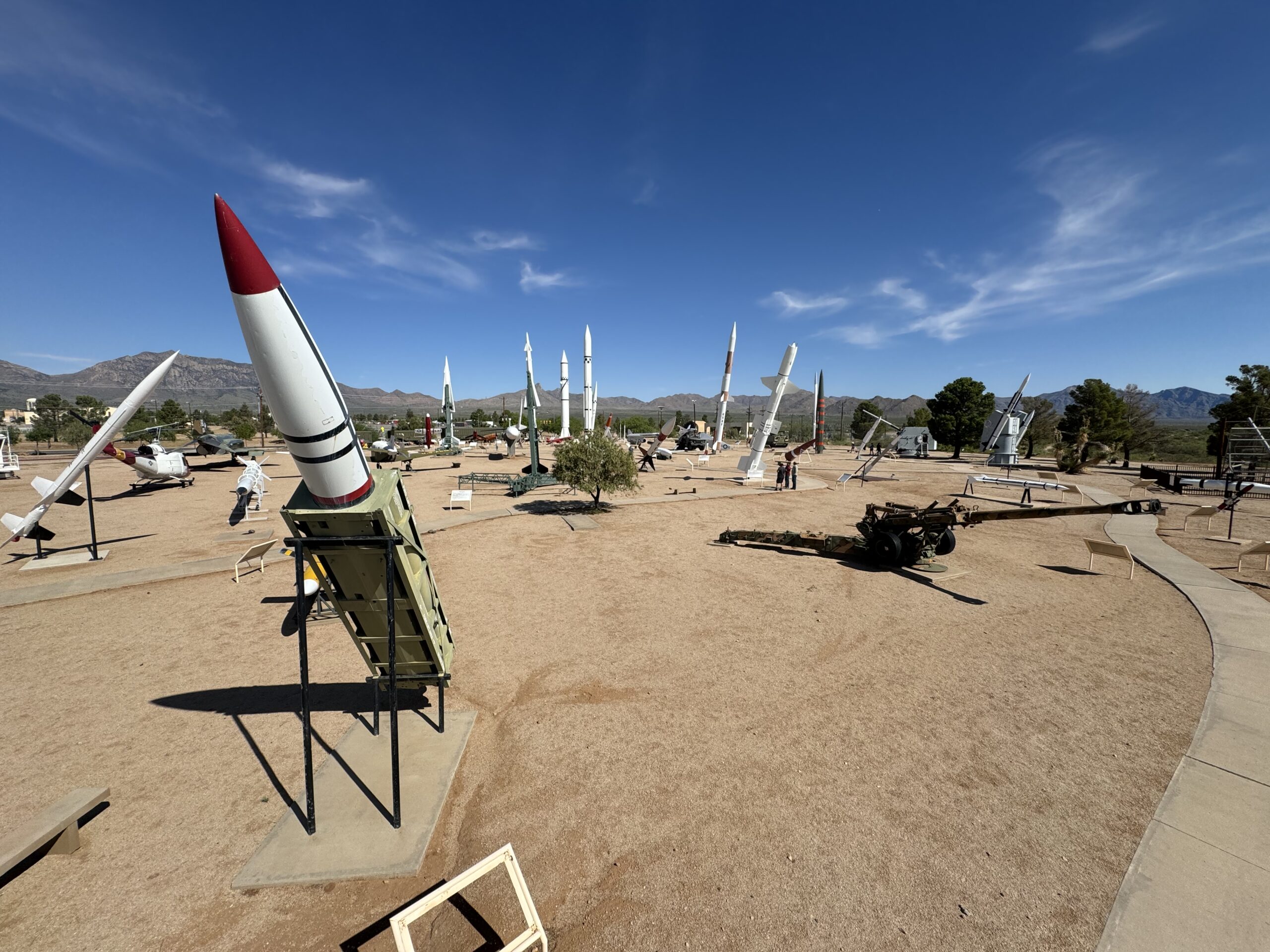Nestled in the heart of southern New Mexico, White Sands National Park is a surreal and captivating destination that stands out among America’s natural wonders. Famous for its expansive gypsum sand dunes that sparkle under the desert sun, the park offers a truly unique experience for everyone.

The Allure of the Dunes
The most striking feature of White Sands National Park is its vast gypsum dune field, which spans 275 square miles and is the largest of its kind in the world. Unlike typical sand dunes, which are composed of quartz-based sand, these dunes are made of gypsum crystals. This mineral composition gives the dunes their distinctive white color and creates a landscape that looks like a sea of snow in the middle of the desert.
The dunes are constantly shifting and reshaping with the wind, ensuring that no two visits to the park are ever the same.
White Sands National Park has a rich cultural history that dates back thousands of years. The area has been inhabited by humans for millennia, with evidence of prehistoric human activity found throughout the park. Native American tribes, including the Mescalero Apache, have historically lived in and around the region. The park also contains remnants of historic ranches and the legacy of early settlers who attempted to make a life in this challenging environment.
White Sands National Park vs. Great Sand Dunes National Park
When comparing White Sands National Park with Great Sand Dunes National Park, there are a few distinctions to note. The first is the composition of the dunes; White Sands is made of Gypsum while Great Sands is composed of traditional tan quartz. Second White Sands is the largest gypsum dune field, while Great Sand Dunes boasts the tallest dunes in North America. Also, Great Sand Dunes provides more diverse terrain and activities such as Medano Creek play and extensive backcountry hiking.

Activities in White Sands National Park
Sledding: The main attraction of the park is sledding down the dunes! The soft, powdery gypsum sand is perfect for sledding, and it provides a thrilling ride for both kids and adults. During our visit, even with temperatures over 100 degrees, the sand felt fine to our bare feet and we had an incredible time sledding down the dunes. Because of the summer heat, the park was less crowded, which meant we were able to pick our own secluded spot to sled.


Sleds can be purchased at the visitor center, or you can bring your own.
Pro Tip: we checked into our hotel before going to the park and asked to borrow sleds there. The front desk was more than happy to lend us as many as we needed, along with the wax you can use on the bottom of the sleds. This was completely hassle-free without any kind of checkout system. Just ask for sleds, and you shall receive them!
We also found an orphan sled on one of the dunes while we were there, and despite our best efforts to give it away while we were sledding, we had no takers. The next morning as we continued our journey south, we drove by the main entrance and stopped a car to give them the extra sled. No reason to let a good sled go to waste!
Where to sled
Dunes Drive is an eight-mile drive from the visitor center directly into the dunefield. The first five miles of Dunes Drive are paved, but the last three miles you are driving directly on the gypsum sand. The road is suitable for all vehicles, but it will be slow going with plenty of potholes, sand drifts and rough “washboard” spots. The washboard spots make your car shake quite extensively! Also, note that a safety corridor is in effect between mile markers 3 and 5.5 along Dunes Drive.

Do not get distracted by the first couple miles of the loop road. In this area, the dunes are smaller and there is a lot of vegetation that will get in your way! Our best advice is to keep your foot on the gas till you at least get to mile marker 6. Then you can choose where to sled.
Once you are to mile marker 6 and beyond, the dunes are taller, the vegetation is scarce, and there are plenty of picnic shelters you can park at. The picnic shelters are great because they have covers over them providing a nice spot to take a break and be shielded from the sun. Find a spot away from any crowds and have fun!

Temperature
One thing we found fascinating was the temperature of the sand was cooler than the temperature of the air on a hot July day! We arrived mid-afternoon and expected that we would be burned up by the sand and the kids would be complaining of being hot and sweaty within minutes of our arrival. The reality was just the opposite. Though it was over 100 degrees outside, the sand was only lukewarm and we were able to run around barefoot.
In addition, the heat was dry so we weren’t all that sweaty even after we were done for the day. We did take plenty of water breaks and a couple of shade breaks under the picnic shelter we parked at, but the weather had no impact on our day. If anything, it was the opposite as it likely discouraged others from coming out and enjoying the park and we had the entire area all to ourselves!

Hiking:
Believe it or not, one of the best ways to experience the beauty of White Sands is by hiking its trails. We opted against hiking during our visit as we arrived mid-afternoon and the temperatures were over 100 degrees, but the park offers a variety of trails that cater to different skill levels and interests.
In speaking with one of the park rangers, they have a few recommendations including the Interdune Boardwalk which is a short, accessible trail that features interpretive exhibits about the park’s unique ecosystem.
The other recommendation we received was the Alkali Flat Trail which is a five-mile round-trip hike that takes you deep into the heart of the dune field. This trail offers stunning panoramic views and a chance to immerse yourself in the tranquil beauty of the desert. But be careful if you attempt this one – we were told that it is very easy to get disoriented on this trail and lose track of where you are!
How Long?
From a time perspective, you can spend as much or as little time as you want sledding, but that is the main event. A couple of hours at the park was plenty for us, and we spent the rest of the evening swimming at the hotel pool!


Other Things To Do In The Area
The next morning after our sledding adventures on our way out of time, we stopped at the White Sands Missile Range Museum and Missile Park. This was well worth the stop! Plan on spending an hour here with a quick loop through the museum and then head out to the missile park to see the vast amount of missiles and additional equipment they have set up. Navigating to the museum is slightly tricky but not a big deal.

Final Note:
Because of the close proximity to White Sands Missile Range, there are times when the highway to the park is closed for up to an hour. Though it is not a regular event, it can happen – so be prepared just in case!




